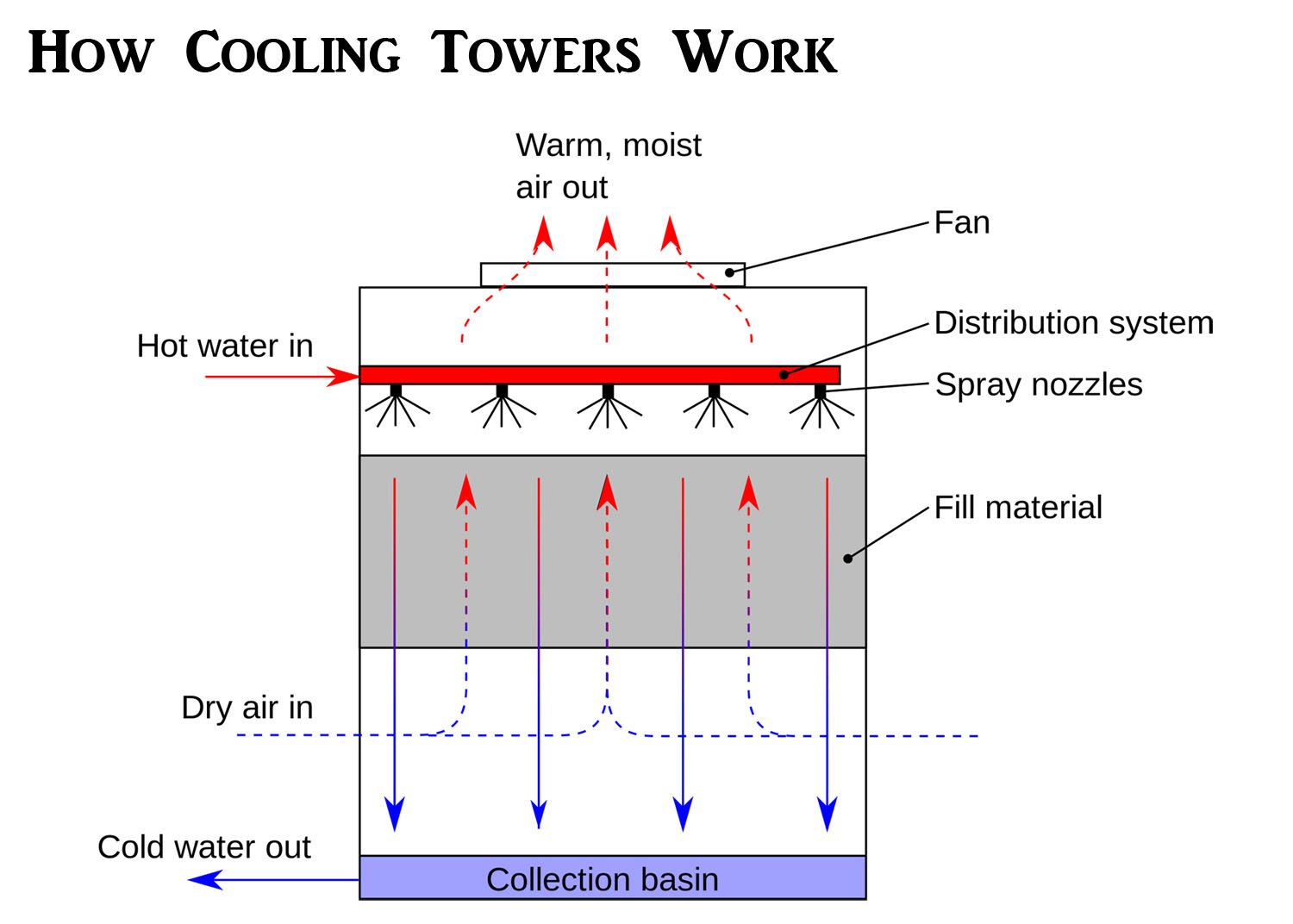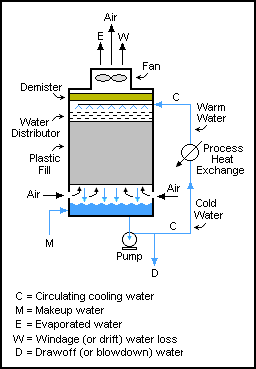In a short summary the purpose of a cooling tower is to cool down water that gets heated up by industrial equipment and processes. To better understand how heat dissipation occurs two concepts need to be introduced.
Unfortunately many older and rural systems were designed to drain cooling tower water directly to drainage tile fields collection ponds ditches creeks or other storm sewers.

Purpose of cooling tower. Matters needing attention when replacing the Cooling Tower Fill. Evaporation is forced through the use of simple effective components which normally require minimum maintenance. A cooling tower water treatment system is an arrangement of technologies that remove damaging impurities from your cooling tower feed water circulation water andor blowdown.
In an effort to protect the environment the Environmental Protection Agency EPA enacted The. What type of cooling tower you have open circulating once-through or closed loop. In induced draft cooling towers the fan is always axial.
This results in a loss of water from the cooling system and so it is not suitable for all locations and system designs. But why is so much energy wasted in a nucl. Water comes in the cooling tower hot from industrial process and goes out of the cooling tower cold back into the industrial process.
Cooling towers work on the principle of heat rejection. A cooling tower is a heat rejection device which extracts waste heat to the atmosphere though the cooling of a water stream to a lower temperature. The tower cools down the circulating water based on heat.
Open or wet cooling towers are the most efficient way to reject heat from the cooling system because the water evaporates to carry the heat away. They are usually attached to another system either a heat pump Loop or a chiller Loop. As this occurs a small volume of water is evaporated reducing the temperature of the water being circulated through the tower.
The purpose of the cooling tower fan is to induce a draft through the cooling tower to aid in heat transfer. They extract heat to the atmosphere through evaporative cooling. Read on to find the answers to your questions on price technical specifications and the best cubic and round cooling towers on the market.
Evaporative cooling towers are able to best realise the waterair heat exchange process. Cooling Tower Applications Cooling towers are typically used in large-scale cooling operations such as power generation oil and gas refining and thermal power stations. One very important deciding factor on choosing a chiller or a cooling.
A cooling tower is a specialized heat exchanger in which air and water are brought into direct contact with each other in order to reduce the waters temperature. What are cooling towers and why are they used. Broadly speaking the cooling tower is tasked with cooling the water circulating the condenser in air conditioning systems industrial processes power plants refineries and other industries.
If you look at the roof of most high rise commercial buildings or even around industrial sites and power stations youll notice these large boxes with a fan on top. These are Cooling Towers and their purpose is to reject the unwanted heat from a building or process. The principal function of a cooling tower is to remove heat from the water discharged from the condenser so that the water can be discharged to the environment or recirculated and reused.
The specific configuration of your system will depend on several things including. Cooling towers are used to reject unwanted heat from a building a large building with a large heat load. Mechanical draft cooling towers have fans.
The towers themselves are enclosed steady-flow devices for cooling water by evaporation through direct contact with air. The purpose of fill in a cooling tower is to cool water to make full use of water resources reduce the load of urban tap water supply network and reduce the operating cost cooling water is treated by cooling tower and recycled. Cooling towers are used in conjunction only with water-cooled chillers and vary in size from small rooftop units to very large hyperboloid structures.
In forced draft cooling towers the fan can be either axial or centrifugal. Cooling towers exploit the latent heat of evaporation. A Cooling Tower rejects waste heat to the atmosphere through the cooling of a water stream to a lower temperature.

